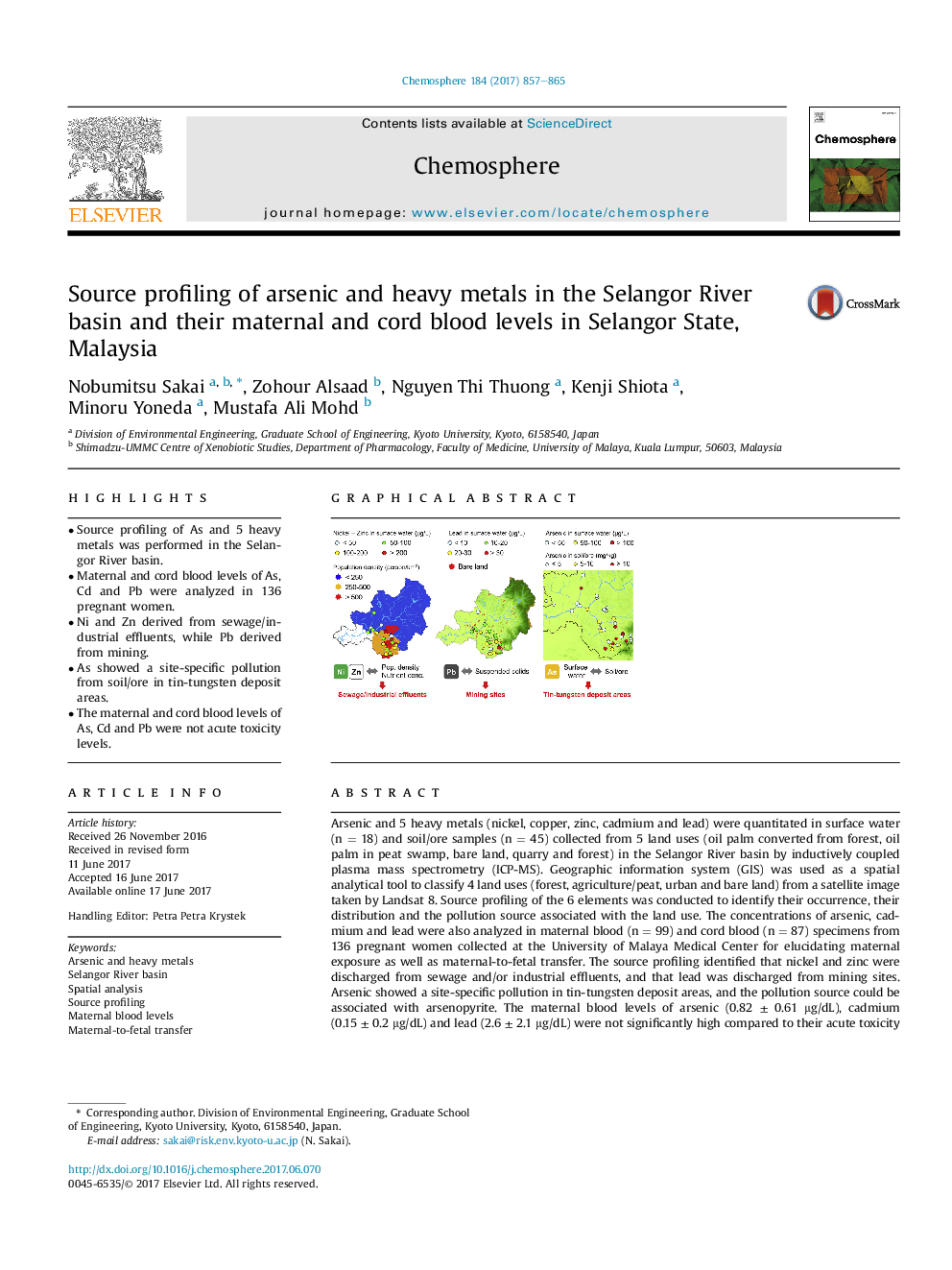| کد مقاله | کد نشریه | سال انتشار | مقاله انگلیسی | نسخه تمام متن |
|---|---|---|---|---|
| 5746217 | 1618787 | 2017 | 9 صفحه PDF | دانلود رایگان |
- Source profiling of As and 5 heavy metals was performed in the Selangor River basin.
- Maternal and cord blood levels of As, Cd and Pb were analyzed in 136 pregnant women.
- Ni and Zn derived from sewage/industrial effluents, while Pb derived from mining.
- As showed a site-specific pollution from soil/ore in tin-tungsten deposit areas.
- The maternal and cord blood levels of As, Cd and Pb were not acute toxicity levels.
Arsenic and 5 heavy metals (nickel, copper, zinc, cadmium and lead) were quantitated in surface water (n = 18) and soil/ore samples (n = 45) collected from 5 land uses (oil palm converted from forest, oil palm in peat swamp, bare land, quarry and forest) in the Selangor River basin by inductively coupled plasma mass spectrometry (ICP-MS). Geographic information system (GIS) was used as a spatial analytical tool to classify 4 land uses (forest, agriculture/peat, urban and bare land) from a satellite image taken by Landsat 8. Source profiling of the 6 elements was conducted to identify their occurrence, their distribution and the pollution source associated with the land use. The concentrations of arsenic, cadmium and lead were also analyzed in maternal blood (n = 99) and cord blood (n = 87) specimens from 136 pregnant women collected at the University of Malaya Medical Center for elucidating maternal exposure as well as maternal-to-fetal transfer. The source profiling identified that nickel and zinc were discharged from sewage and/or industrial effluents, and that lead was discharged from mining sites. Arsenic showed a site-specific pollution in tin-tungsten deposit areas, and the pollution source could be associated with arsenopyrite. The maternal blood levels of arsenic (0.82 ± 0.61 μg/dL), cadmium (0.15 ± 0.2 μg/dL) and lead (2.6 ± 2.1 μg/dL) were not significantly high compared to their acute toxicity levels, but could have attributable risks of chronic toxicity. Those in cord blood were significantly decreased in cadmium (0.06 ± 0.07 μg/dL) and lead (0.99 ± 1.2 μg/dL) but were equivalent in arsenic (0.82 ± 1.1 μg/dL) because of the different kinetics of maternal-to-fetal transfer.
408
Journal: Chemosphere - Volume 184, October 2017, Pages 857-865
